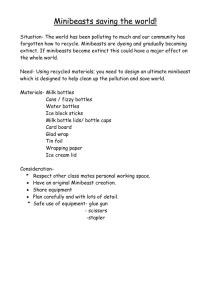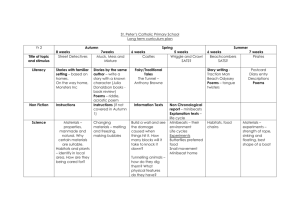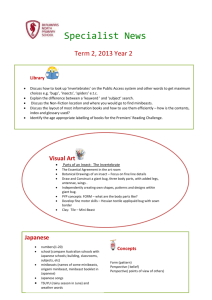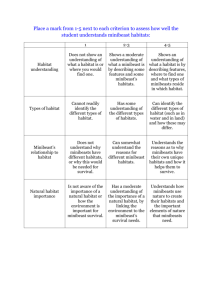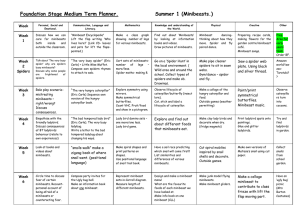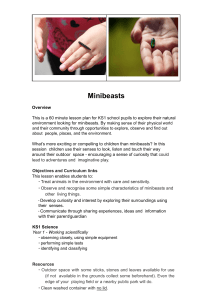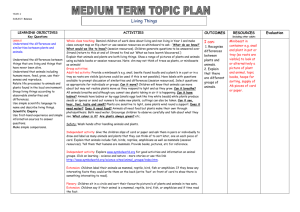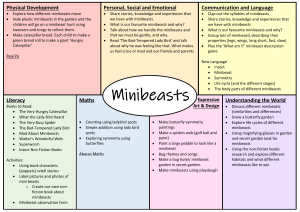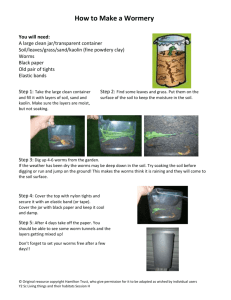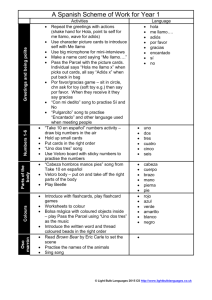Session A - Cloudfront.net
advertisement
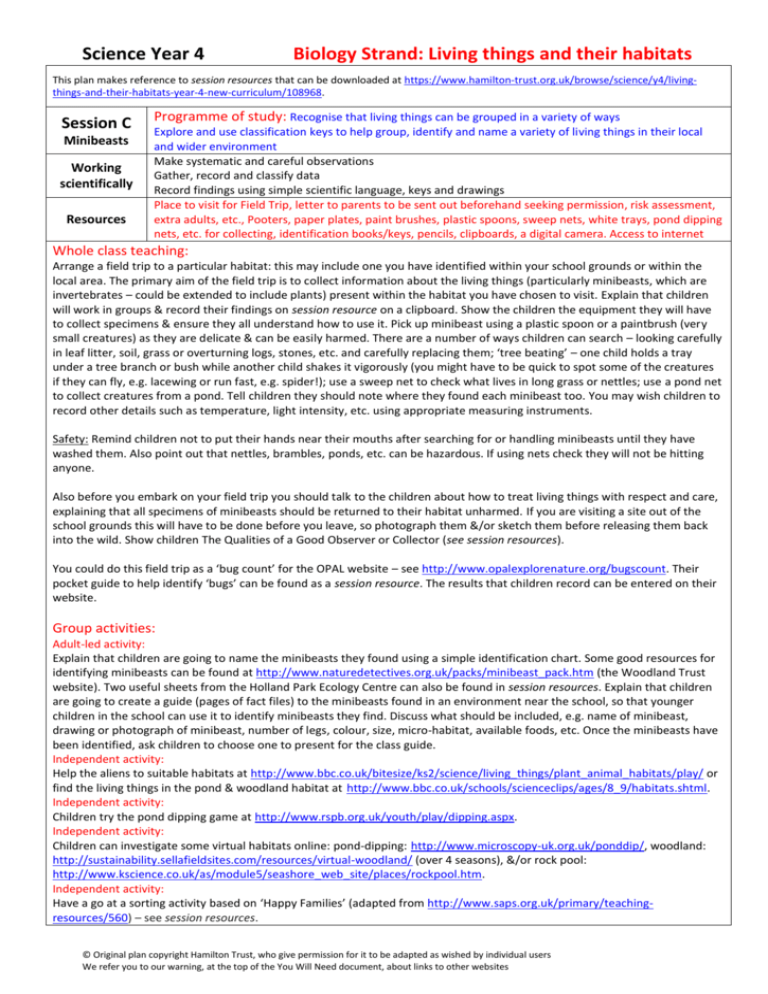
Science Year 4 Biology Strand: Living things and their habitats This plan makes reference to session resources that can be downloaded at https://www.hamilton-trust.org.uk/browse/science/y4/livingthings-and-their-habitats-year-4-new-curriculum/108968. Session C Minibeasts Working scientifically Resources Programme of study: Recognise that living things can be grouped in a variety of ways Explore and use classification keys to help group, identify and name a variety of living things in their local and wider environment Make systematic and careful observations Gather, record and classify data Record findings using simple scientific language, keys and drawings Place to visit for Field Trip, letter to parents to be sent out beforehand seeking permission, risk assessment, extra adults, etc., Pooters, paper plates, paint brushes, plastic spoons, sweep nets, white trays, pond dipping nets, etc. for collecting, identification books/keys, pencils, clipboards, a digital camera. Access to internet Whole class teaching: Arrange a field trip to a particular habitat: this may include one you have identified within your school grounds or within the local area. The primary aim of the field trip is to collect information about the living things (particularly minibeasts, which are invertebrates – could be extended to include plants) present within the habitat you have chosen to visit. Explain that children will work in groups & record their findings on session resource on a clipboard. Show the children the equipment they will have to collect specimens & ensure they all understand how to use it. Pick up minibeast using a plastic spoon or a paintbrush (very small creatures) as they are delicate & can be easily harmed. There are a number of ways children can search – looking carefully in leaf litter, soil, grass or overturning logs, stones, etc. and carefully replacing them; ‘tree beating’ – one child holds a tray under a tree branch or bush while another child shakes it vigorously (you might have to be quick to spot some of the creatures if they can fly, e.g. lacewing or run fast, e.g. spider!); use a sweep net to check what lives in long grass or nettles; use a pond net to collect creatures from a pond. Tell children they should note where they found each minibeast too. You may wish children to record other details such as temperature, light intensity, etc. using appropriate measuring instruments. Safety: Remind children not to put their hands near their mouths after searching for or handling minibeasts until they have washed them. Also point out that nettles, brambles, ponds, etc. can be hazardous. If using nets check they will not be hitting anyone. Also before you embark on your field trip you should talk to the children about how to treat living things with respect and care, explaining that all specimens of minibeasts should be returned to their habitat unharmed. If you are visiting a site out of the school grounds this will have to be done before you leave, so photograph them &/or sketch them before releasing them back into the wild. Show children The Qualities of a Good Observer or Collector (see session resources). You could do this field trip as a ‘bug count’ for the OPAL website – see http://www.opalexplorenature.org/bugscount. Their pocket guide to help identify ‘bugs’ can be found as a session resource. The results that children record can be entered on their website. Group activities: Adult-led activity: Explain that children are going to name the minibeasts they found using a simple identification chart. Some good resources for identifying minibeasts can be found at http://www.naturedetectives.org.uk/packs/minibeast_pack.htm (the Woodland Trust website). Two useful sheets from the Holland Park Ecology Centre can also be found in session resources. Explain that children are going to create a guide (pages of fact files) to the minibeasts found in an environment near the school, so that younger children in the school can use it to identify minibeasts they find. Discuss what should be included, e.g. name of minibeast, drawing or photograph of minibeast, number of legs, colour, size, micro-habitat, available foods, etc. Once the minibeasts have been identified, ask children to choose one to present for the class guide. Independent activity: Help the aliens to suitable habitats at http://www.bbc.co.uk/bitesize/ks2/science/living_things/plant_animal_habitats/play/ or find the living things in the pond & woodland habitat at http://www.bbc.co.uk/schools/scienceclips/ages/8_9/habitats.shtml. Independent activity: Children try the pond dipping game at http://www.rspb.org.uk/youth/play/dipping.aspx. Independent activity: Children can investigate some virtual habitats online: pond-dipping: http://www.microscopy-uk.org.uk/ponddip/, woodland: http://sustainability.sellafieldsites.com/resources/virtual-woodland/ (over 4 seasons), &/or rock pool: http://www.kscience.co.uk/as/module5/seashore_web_site/places/rockpool.htm. Independent activity: Have a go at a sorting activity based on ‘Happy Families’ (adapted from http://www.saps.org.uk/primary/teachingresources/560) – see session resources. © Original plan copyright Hamilton Trust, who give permission for it to be adapted as wished by individual users We refer you to our warning, at the top of the You Will Need document, about links to other websites Science Year 4 Biology Strand: Living things and their habitats Plenary: Collate children’s finished pages for the minibeast guide – ask for volunteers to create a front cover. This can then be given to another class to use in a minibeast hunt! Reinforce the identification of some common minibeasts by playing Creepy Crawly Bingo – see session resources. I can: 1. Name some common minibeasts/invertebrates. 2. Use a simple identification chart. 3. Write a fact file for a minibeast. © Original plan copyright Hamilton Trust, who give permission for it to be adapted as wished by individual users We refer you to our warning, at the top of the You Will Need document, about links to other websites
